Parameters
Parameters in Step are used to define variables that are globally accessible from any Plans and Keywords. You can think of Parameters the same way as “Global” variables in programming language.
Parameters definition
The required basic configuration for creating Parameters are the Key and Value fields, which are defined as Strings. In addition to the required fields, a Parameter configuration can also be modified using the following fields :
- Scope : indicates the entity that has access to the parameter
- Global : accessible by all Keywords
- Application : accessible by keywords registered to a given application
- Keyword : accessible only by the specified Keyword
- Activation script : a Groovy boolean expression can optionally be used here to set the parameter value dynamically. The following bindings are available for use in activation script:
- user : the currently logged in user
- screen settings : any defined screen settings can be used via ID
- Priority : indicates the priority rating for the activation scripts. Activation scripts with the highest priority rating gets evaluated first.
Create new parameter
To create a Parameter, click Parameters on the sidebar menu, then click the Add new (+) button as shown on the following screenshot.
Fill in the Key and Value fields, then click Save.

You can now use “myBasicParameter” in any of your Plans or Keywords as shown in the following screenshot:

Use activation script
Let’s now use activation script to set a parameter “log” based on the “environment” setting. In the following screenshot, we created the “log” parameter twice with different activation scripts for each environment:
- “TEST” environment execution sets the parameter value to “Debug”
- “PROD” environment execution sets the parameter value to “Error”
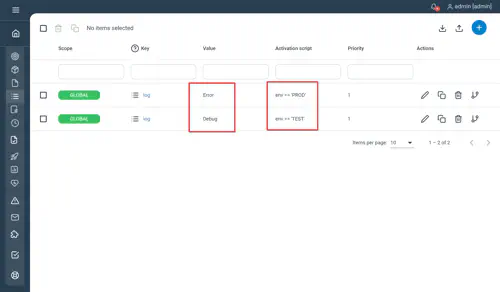
You can verify that the value is properly set by running a simple Echo on any of the environments. The following is an example execution screenshot of the environment: TEST.

Use prioritized activation script
In addition, you can prioritize the evaluation of activation script through the “Priority” setting. In the following screenshot, we defined the “log” value to be Error for both environments with a higher expression priority than the one set for the “Test” environment only.
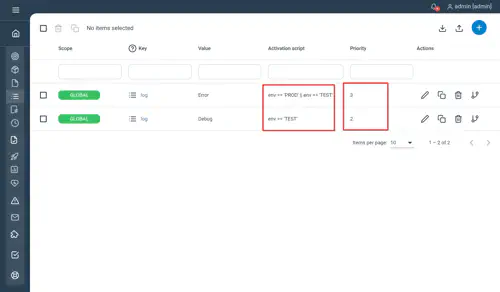
The expected outcome is that on each environment, the log level will be set to Error.
Use other scopes
When creating or editing a parameter you may assign it to a given scope to specify its access.
Application scope
To enable Application scope, you’ll have to add a new entry in the entity model for keyword. You may refer to the customization section. The new entry must have the ID “attributes.application” as shown in the following screenshot.
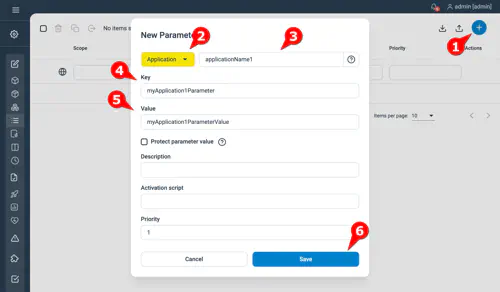
Note : The scope application is only available if applications were configured in the screen settings as illustrated in the following screenshot:
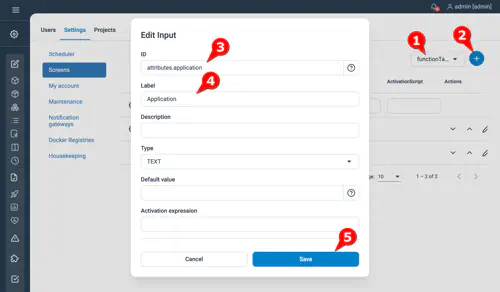
Keyword scope
The following screenshot shows how to create a parameter accessible by a specific Keyword.
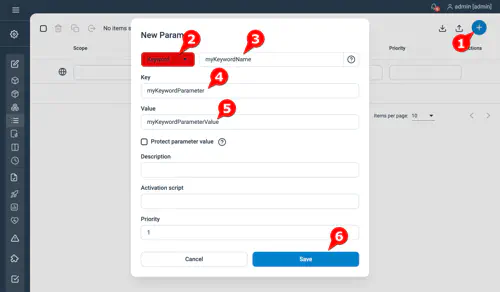
Parameters table view
The parameters table view lets you manage existing parameters. It also lets you track activities like the last modification time and the user.
Protected parameters
You can select “Protect parameter value” when creating or editing a parameter to protect its value. This means that the value will get obfuscated in the UI and in the exported data. After protecting a parameter it is not possible to remove the protection imn order to maintain its security.
Note: If you name a parameter with a name containing either “pwd” or “password” the protection will be preselected but can be manually deselected before saving.
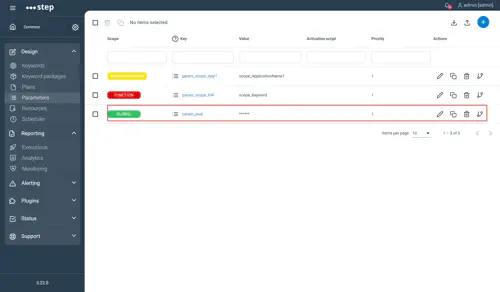
Encryption manager
From release 3.16, Step Enterprise features an encryption manager which further secures parameters. When enabled, the values of the protected parameters get directly encrypted at creation and update times. The values are decrypted during Keyword call.
To activate the encryption manager, contact your Step administrator. You can also refer to the page dedicated to the encryption manager for details.